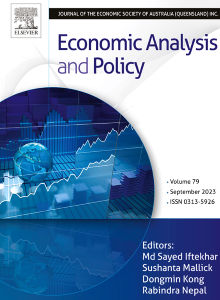Fertility policy, fertility intentions, and fertility transition: A quasi-natural experiment based on the "Universal Two-Child" Policy
IF 7.9
2区 经济学
Q1 ECONOMICS
引用次数: 0
Abstract
Fertility policies do not directly influence fertility behaviors but rather act through the mediation of fertility intentions. This study develops a framework for analyzing the transition of fertility intentions under the policy of relaxing fertility restrictions across different orders. It introduces a novel “intention-policy-behavior” linkage to elucidate the mechanisms of fertility transition. Using panel data from the 2014 and 2018 China Family Panel Studies (CFPS), we focus on group with one child and examining the effect of "Universal Two-Child" policy on transforming fertility intentions into behavior. It finds that families wanting two or more children significantly increased their number of children after the policy's implementation. Additionally, the greater the fertility intention, the better the transformative effect of the fertility policy. In group studies, the transformation of fertility intentions is significantly higher when the firstborn is a girl in urban areas, indicating a gender preference for male children in fertility decisions. Lastly, heterogeneity analysis reveals that housing wealth also impacts the transformation of intentions, with those desiring a third child requiring more living space. Our study confirms the role of fertility policies in transforming fertility intentions into behavior. A multidimensional policy combination with others aimed at boosting fertility intentions can effectively enhance fertility rates.
求助全文
约1分钟内获得全文
求助全文
来源期刊

Economic Analysis and Policy
ECONOMICS-
CiteScore
9.80
自引率
9.20%
发文量
231
审稿时长
93 days
期刊介绍:
Economic Analysis and Policy (established 1970) publishes articles from all branches of economics with a particular focus on research, theoretical and applied, which has strong policy relevance. The journal also publishes survey articles and empirical replications on key policy issues. Authors are expected to highlight the main insights in a non-technical introduction and in the conclusion.
 求助内容:
求助内容: 应助结果提醒方式:
应助结果提醒方式:


